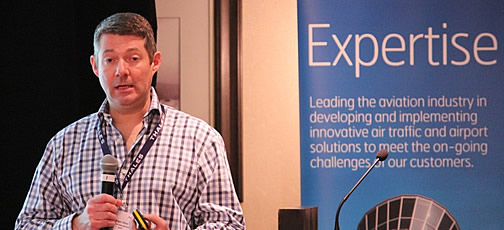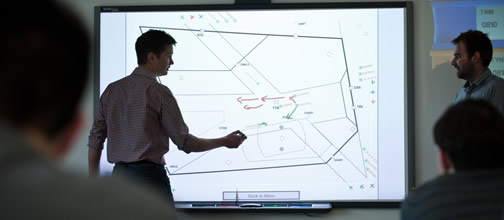The future of ATM safety measurement
6 November 2013Over the last 20 years, ATM safety performance has improved year upon year. In fact today, ATM safety performance is considered exceptional.
That is obviously great news for all of us. However, it actually poses challenges (albeit welcome ones!) for those of us who measure safety in Air Traffic Management.
As our safety performance has improved over the years, our understanding of safety and the way we measure safety has evolved too. Given the comparative rarity of accidents, we have always monitored substitute measures that indicate ATM safety.
To begin with, we examined the number of Airproxes – a measure where, in the opinion of a pilot or air traffic controller, an air-traffic related situation occurred where the safety of the aircraft was or may have been compromised.

However, as the number of these events decreased we sought alternative substitute measures, which occurred more frequently, to provide a more statistically relevant data sample from which we could assess safety performance.
These have included a number of measures, such as examining what are termed ‘safety significant events’ which analyse, for each event, how many barriers remained to prevent the event from becoming an accident. However, in a similar way to Airproxes, the numbers of these events has also reduced.
We now find ourselves in a situation where our existing safety performance measures indicate that we have made considerable progress in reducing our safety risk. But, we are approaching the situation where we have an ever decreasing set of events to investigate and learn from.
In fact, when we examine our operational data as a whole we realise that these events only make up a tiny fraction of the data available. This leads us to question whether understanding safety from the number of times that things fail is going to be an effective way of understanding safety in the future.

We are therefore proposing that we need to adopt a broader approach to safety which not only measures safety when things fail, but also measures safety when things succeed. Rather than counting unsafe events and understanding safety by finding and fixing the cause, we will start to shift our approach to examine and monitor everyday performance to understand how it relates to safety.
We want to understand why, and how, for the vast majority of the time things go right and do not result in incidents. We then want to use this to ensure we keep doing things right, but also to use this understanding of normal, day-in-day-out performance, to continue to improve safety performance.
This complementary approach is termed “safety intelligence” in NATS and we believe that this should be the basis of future safety measurement in air traffic control, so much so, that it is a fundamental tenet of our recently published NATS Safety Strategy. It is something that we really believe will help our safety performance continue to improve over the next 20 years which is why we will be making the case for it at the CANSO Global Safety Conference this week.
Comments
Please respect our commenting policy and guidelines when posting on this website.



